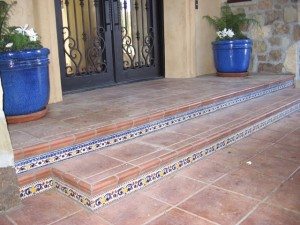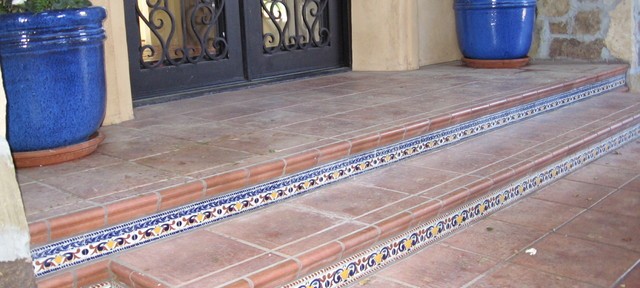Enhancing our outdoor space whether gardens, patios, terraces or simply walkways usually involves two choices: setting outdoor tile over concrete or laying tiles or outdoor materials directly on the ground.
Advantages Of Setting Outdoor Tile Over Concrete
An advantage of putting outdoor tiles over concrete is that we will not have to waste the concrete by demolishing the existing surface. Moreover, the concrete serves as extra protection against water absorption and added strength to carry heavier weights that are dropped on or pressed against the tiles.
Disadvantages Of Setting Outdoor Tile Over Concrete
In the same way that demolishing the existing concrete effort would require great effort, putting the tiles over concrete also requires huge effort in preparing the surface for laying tiles. For one thing, tiles cannot be put over cracked or chipped concrete. Setting tiles on cracked or uneven surfaces will cause the tiles to crack in the future due to movement by way of pressure exerted on it. Thus, one has to follow some steps in putting tiles over concrete.
How To Put The Tiles Over Concrete
In setting the tiles over concrete, the easiest step is to first clean the concrete surface thoroughly, preferably scrubbed with a brush in order to remove dirt and oil build-up. Various cleaners are available in hardware stores for this purpose but Tri-Sodium Phosphate is recommended. By doing this, we will be able to check for cracks or uneven surfaces to sustain a good hold for the tile mortar. Once all cracks are filled and the surface is evened out, it is best to apply a concrete sealant to inhibit moisture from seeping under the tile.
Again, hardware stores offer a wide range of these products and it is best to ask assistance from authorized representatives. If work cannot be completed within a day, it is best to protect the unfinished project with a water-repellant cover. Before continuing, however, we must make sure that the edges are squared and fill any gaps if any. Once the preparations have been made, we can already start laying the tiles we have chosen for our project.
However, we must bear in mind that technical considerations such as provisions for expansion joints to adapt to expansion or contraction caused by temperature conditions must be made. Thus, it is best not to tile over them to prevent cracking. To determine the exact measurements for expansion joints, it is best to consult related literature or to watch educational videos regarding this matter.
Setting Tiles Directly On The Ground
 This option is favorable if one has an empty ground to work on. It requires determining the right kind of tiles or outdoor material to be used. For instance, using non-porous tiles are advisable in order to prevent the absorption of water and eventual deterioration of the material. To save on costs, one can use small pebbles to surround spaces in between the tiles. This may not achieve a polished or sophisticated effect, but it allows a more natural ambiance considering that we are setting the tiles outdoors.
This option is favorable if one has an empty ground to work on. It requires determining the right kind of tiles or outdoor material to be used. For instance, using non-porous tiles are advisable in order to prevent the absorption of water and eventual deterioration of the material. To save on costs, one can use small pebbles to surround spaces in between the tiles. This may not achieve a polished or sophisticated effect, but it allows a more natural ambiance considering that we are setting the tiles outdoors.
All in all, the decision on whether to lay tiles directly on the ground or outdoor tile over concrete only boils down to how much effort we want to put in order to accomplish what we want and sometimes it can simply be reduced to a choice between all or nothing.
